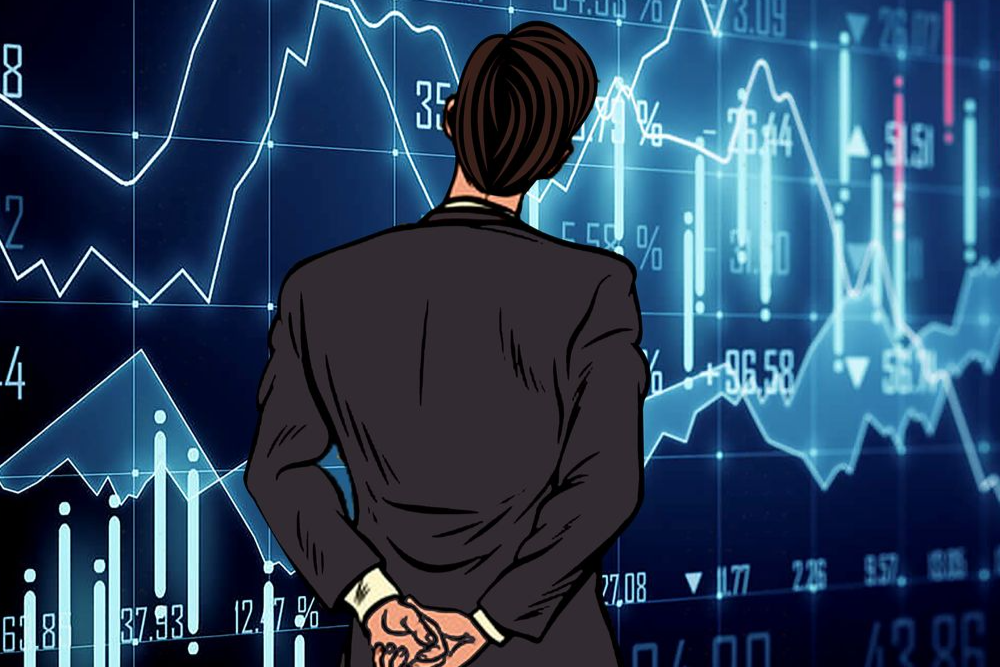It is believed that investment decisions are mostly controlled by emotions, both in the traditional markets and cryptocurrency markets. Many traders in the market are likely to become greedy when there are upticks, which mostly results in fear of missing out (FOMO), and would sell-off their crypto assets on the fear of making losses when the market turns red.
Since the emotions of market participants have a part to play in the price actions of digital currencies, the crypto fear and greed index has become relevant to guide investors looking to add any cryptocurrency like Bitcoin to their portfolio, especially for swing trading.
What is the Crypto Fear and Greed Index?
More like a tool, the crypto fear and greed index is a method used in analyzing the sentiments and emotions of traders and investors at any time in the cryptocurrency market. Specifically, a Bitcoin fear and greed index tool shows investors the current mood of BTC traders at any point in time.
Just like the Bitcoin fear and greed index, every other cryptocurrency supposedly would have its dedicated index, as the information is curated for a particular cryptocurrency.
The Bitcoin Fear and Greed index was reportedly developed by Alternative.me. The digital currency tracking platform curates its data from six different factors, which include:
– Volatility: Bitcoin’s volatility accounts for 25 percent of all data used for the Bitcoin fear and greed index. It considers any unusual surge in volatility an indicator of a fearful market.
– Social Media: Social media activities make up about 15 percent of the total data source. The unusually high interaction rate for Bitcoin-related posts on various hashtags shows a growing public interest in crypto and corresponds to greedy market behavior.
– Market Momentum/Volume: Market volume is another critical data source for the Bitcoin fear and greed index tool. It makes up 25 percent of all data, and daily increases in buying volumes in a positive market signal a greedy/too bullish market, according to Alternative.me.
– Surveys: The crypto tracking platform also curates about 15 percent of the index data from public polling platforms. Although not much attention is paid to this particular source, it creates a picture of crypto investors’ sentiment.
– Dominance: Bitcoin dominance makes up 10 percent of the data sources. The uptick in Bitcoin dominance defines a rising level of greed, while the shrinking of Bitcoin dominance leads to a fearful market.
– Trends: The platform also gave Google Trends data for several search queries that relate to Bitcoin. Meanwhile, this makes up only 10 percent of the entire data source used for the Bitcoin Fear and Greed index.
Suggestions:
The Complete Newbie’s Guide to Trading Bitcoins
5 Must-Have Trading Tools for 2020: Coinrule, eToroX, Kraken Futures, and Others
How Bitcoin fear and greed index works
The Bitcoin Fear and Greed index uses a scale of 0 – 100 to relay the emotional state of the market. After gathering sentiments from the aforementioned factors, the data are being crunched into the meter, wherein 0 – 49 means a fearful market, whereas 51 – 100 means a greedy market.

Basically, the level of fear or greed represented in the index increases down the line, so that 0 indicator shows an “Extreme Fear” in the cryptocurrency market, while 100 shows “Extreme Greed.” Meanwhile, an indicator of 50 means Neutral, i.e., the market is neither fearful nor greedy.

As you can see in the chart above, on June 1, 2020, the crypto fear and greed index for the Bitcoin market is neutral since the indicator is at 50.
The crypto fear and greed index works similarly to the index developed by CNN Money for the stock market. Like the Alternative.me index, CNN Money garners data from seven different market-related factors, including Stock Price Momentum, Stock Price Strength, Safe Haven Demand, Stock Price Breadth, Junk Bond Demand, Market Volatility, and Put and Call Options.
Akin to the case with traditional markets, the basic idea behind the crypto fear and greed index is aimed at helping investors determine the emotional state of the cryptocurrency market; whether industry players are fearful or too greedy.
How to use crypto fear and greed index
Before discussing how to profit from the crypto fear and greed index, it’s worth noting some insightful quotes – although from famous traditional asset investors – that can be applied to the cryptocurrency market.
Billionaire investor and businessman, Warren Buffett
“Occasional outbreaks of those two super-contagious diseases, fear, and greed will forever occur in the investment community. The timing of these epidemics will be unpredictable. […] And the market aberrations produced by them will be equally unpredictable, both as to duration and degree.”
“Investors should remember that excitement and expenses are their enemies. And if they insist on trying to time their participation in equities, they should try to be fearful when others are greedy and greedy only when others are fearful.”
American-British investor and fund manager John Templeton:
“Bull markets are born on pessimism, grown on skepticism, mature on optimism, and die on euphoria. […] The time of maximum pessimism is the best time to buy, and the time of maximum optimism is the best time to sell.”
As it concerns the cryptocurrency market, extreme fear in the index points out that investors and market participants are worried. At the same time, greedy indicators tend to show they are too optimistic. For instance, 0 – 49 on the Bitcoin fear and greed index reflects a fearful Bitcoin market, while 51 – 100 means the market is greedy.
According to Buffett and Templeton’s line of thought, extreme fear signals a buying opportunity. In contrast, Extreme greed indicates the time to sell-off, as the market is due for a correction. It is assumed that too much fear in the market possibly sinks cryptocurrency prices, getting the price lower for buys. However, investors bid up the price beyond its worth, when they get too greedy, which could suddenly result in corrections.
Final thoughts
Having explained how to use the Bitcoin fear and greed index, traders are not advised to depend solely on results from the index to make financial decisions. This is because the Bitcoin fear and greed index could alter in results at a particular time, given that crypto assets are volatile. Other key factors such as the CME Bitcoin Gap could also temporarily affect the price of Bitcoin and the rest of the crypto market.
Hence, while using crypto fear and greed index tools to ascertain the emotional state of the Bitcoin market, traders should equally consider using technical or any other crypto-related indicators to ensure they curb the risk of losing money.
Tags
Bitcoin (BTC)- Crypto Price Update July 24: BTC Maintains $66K, ETH at $3.4K, XRP, TON, and ADA Rallies
- Bitcoin Falls to $65K as Mt. Gox Transfers $2.8 Billion BTC to External Wallet
- News of Marathon Digital’s $138 Million Fine for Breach of Non-Disclosure Agreement Triggers a Bearish 2.5% of Its MARA Stock
- Are $530M Bitcoin ETF Inflows a Blessing or Caution?
- Metaplanet Teams with Hoseki for Real-Time Bitcoin Holdings Verification
- Building Secure Blockchain Systems: An Exclusive Interview with ARPA and Bella Protocol CEO Felix Xu
- Building The “De-Facto Crypto Trading Terminal”: An Exclusive Interview with Aurox CEO Giorgi Khazaradze
- Building a New Global Financial System: An Exclusive Interview With Tyler Wallace, Analytics Head at TrustToken
- “Solana is the Promised Land for Blockchain” — An Exclusive Interview with Solend Founder Rooter
- El Salvador: Where The Bitcoin Revolution Begins With A Legal Tender

 Why Trust Us
Why Trust Us







